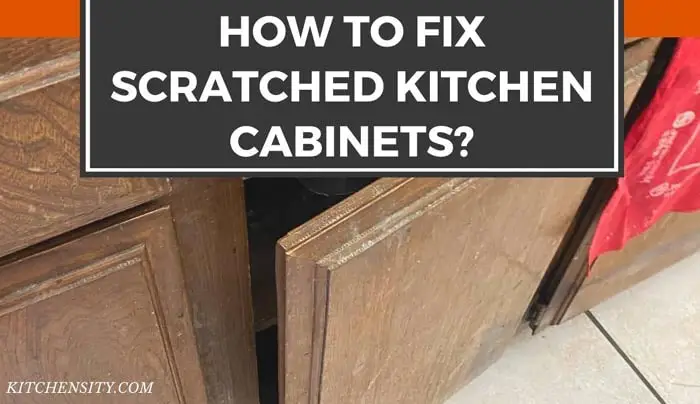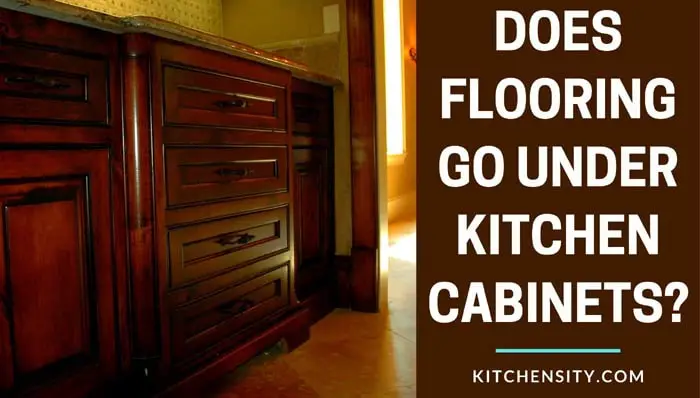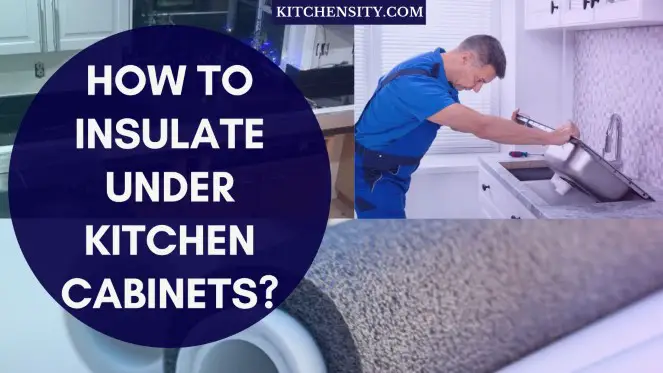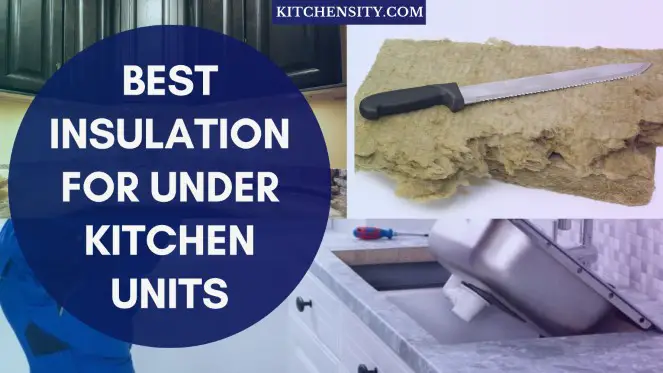The kitchen is often considered the heart of the home, and its appearance plays a significant role in creating a warm and inviting atmosphere.
Kitchen cabinets, being one of the most prominent features, contribute greatly to the overall visual appeal of the space.
However, over time, these cabinets are prone to scratches, which can ruin their beauty and detract from the overall aesthetics of the kitchen.
Scratched kitchen cabinets not only appear unsightly but also give an impression of neglect and poor maintenance. They can significantly diminish the value of your kitchen and make it seem outdated and worn out.
So let’s delve into the methods and techniques for effectively repairing and restoring your scratched kitchen cabinets.

Let’s begin…
Table of Contents
- 1 How To Fix Scratched Kitchen Cabinets?
- 2 Surface Preparation Before Fixing The Scratches
- 3 How To Fix Scratches On Wooden Kitchen Cabinets?
- 4 How To Fix Scratches On Laminate Kitchen Cabinets?
- 5 How To Fix Scratches On Stainless Steel Kitchen Cabinets?
- 6 How To Touch Up Dark Cabinets?
- 7 How To Prevent Kitchen Cabinets From Being Scratched?
- 8 Kitchen Cabinet Scratch Repair Kit
- 9 Final Words
- 10 You May Also Like
- 11 FAQ’s
How To Fix Scratched Kitchen Cabinets?
To fix scratches on kitchen cabinets, start by cleaning the surface. Use a touch-up pen or stain marker in a matching dark color to fill in small scratches. For deeper scratches, apply wood filler, sand the area, and then paint it with a matching dark color. Blend the repairs by gently rubbing the surface with a cloth for a seamless finish.
Read below for a step-by-step process for fixing scratches in various kitchen cabinets.
Also Read – Do Kitchen Cabinets Need Crown Molding?
Surface Preparation Before Fixing The Scratches
Proper surface preparation is crucial when it comes to fixing scratched kitchen cabinets. Before attempting any repairs, it’s essential to ensure that the surface is clean and free from dirt, grease, and other contaminants.
- Clear The Area: Remove any items or objects from the cabinets to ensure easy access to the scratched surface.
- Clean The Surface: Use a mild cleaner or a mixture of gentle soap and warm water to clean the scratched area. Avoid abrasive cleaners or harsh chemicals that could further damage the cabinets.
- Gentle Scrubbing: Gently scrub the surface using a soft cloth or sponge to remove any dirt, grime, or residue. Pay extra attention to the scratched areas to ensure they are properly cleaned.
- Rinse And Dry: Rinse the surface with clean water to remove any cleaner residue, and then dry it thoroughly with a clean cloth. Make sure the cabinets are completely dry before proceeding with any repair methods.
- Evaluate The Surface: Take a closer look at the cabinets to assess the extent of the scratches and determine the best repair method based on the severity and type of damage.
By following these surface preparation steps, you will create a clean and suitable base for applying the necessary fixes to your kitchen cabinets.
Also Read – Is Murphy Oil Soap Good For Kitchen Cabinets?
How To Fix Scratches On Wooden Kitchen Cabinets?
Wooden kitchen cabinets are the easiest to be fixed among the three. But, they are also prone to get scratches.
Now, depending on the size of the scratches, let’s discuss the process to solve them.
Materials Required
- Dye Toner
- Touch Up Pen or Repair Pen
- Cloth
- Any Cleaner
- Paint (if toner is not available)
- Walnut (if tiny scratches)
- Wood Filler and Sandpaper (180 grit) (for deep scratches)
Procedure (For Tiny Scratches)
Step 1: The Walnut Method
If your cabinet’s scratches are tiny or very light, then you can try the walnut method.
It is a very effective method, simply rub the walnut in the affected areas and then clean it with a cloth. Trust me; it will repair all your scratches.
But this method will only work on brown-shade cabinets. It is not for white or light color shades.
Also Read – How To Draft-Proof Your Under Kitchen Cabinets?
Step 2: Touch-Up Pen Method
If you are not satisfied with the first method or the scratches are a bit dark or large, then you can try this method.
When using a touch-up pen to fix scratched kitchen cabinets, achieving a seamless color match is crucial for a professional-looking result.
While touch-up pens are designed to provide an exact or near-exact color match, it’s important to take certain precautions to ensure that the chosen color blends seamlessly with your cabinet’s finish.
- Before applying the touch-up pen to the scratched surface, it’s advisable to test the color on a hidden area or inconspicuous spot of the cabinet.
- This allows you to assess if the pen color matches the cabinet color accurately.
- Apply a small amount of the touch-up pen to the test area and allow it to dry completely.
- Compare the color of the test area to the surrounding cabinet surface to determine if any adjustments are needed.
If the color match is not satisfactory, you may need to explore alternative options.
- One option is to try a different shade or color variant of the touch-up pen from the same manufacturer.
- They often offer multiple shades or tones within a color range to cater to various cabinet finishes.
- Another option is to consider mixing different colors to achieve a more customized match.
- However, exercise caution when mixing colors and always test the mixture on a hidden area before applying it to the scratched surface.
It’s worth noting that cabinet finishes can fade or change over time due to exposure to light and other environmental factors. As a result, the original color of your cabinets may have been slightly altered.
Testing the touch-up pen on a hidden area helps account for any color variations and ensures that the repaired areas blend seamlessly with the rest of the cabinets.
By taking the time to test the touch-up pen on a hidden area and making necessary adjustments, you can achieve a more accurate color match and enhance the overall appearance of your kitchen cabinets.
This attention to detail will contribute to a polished and professional-looking result, leaving no trace of the previous scratches.
Also Read – How To Stop A Draught From Behind Kitchen Cupboards?
Step 3: Brush And Paint Method
If your job is not done with the above steps, you can try this method to solve your problem.
As usual, start by cleaning the surface with a cleaner and rub it with a cloth to dry it.
Now with the help of a small brush, coat some paint on the scratches and immediately rub it with a cloth. Repeat this process until you get a perfect blend. Usually, after two times, it gets perfectly mixed, and it’s tough to identify the scratches.
Your kitchen cabinets are now fixed. What if the scratches are deep? Let’s check it out.
Some Alternative Methods To Try
While the walnut method and touch-up pen method are effective ways to fix scratches on wood cabinets, there are alternative approaches you can consider.
These methods can help you achieve satisfactory results and minimize the appearance of scratches, depending on their severity and the type of finish on your wood cabinets.
- Stain Marker:
- A stain marker is a convenient option for minor scratches on wood cabinets.
- These markers contain a pigmented stain that can be applied directly to the scratched area, helping to blend it with the surrounding wood.
- Choose a stain marker that closely matches the color of your cabinets, and apply it carefully along the scratch.
- Allow it to dry, and then assess the results. You may need to repeat the process or apply multiple coats to achieve a seamless blend.
- Wood Polish Or Conditioner:
- Another method to minimize the appearance of scratches on wood cabinets is to use a wood polish or conditioner.
- These products contain oils and waxes that can help nourish the wood and camouflage minor scratches.
- Apply a small amount of the polish or conditioner to a clean cloth and gently rub it onto the scratched area.
- This can help fill in shallow scratches and restore some of the cabinet’s original luster.
- However, keep in mind that this method is more suitable for surface-level scratches and may not be as effective for deeper or more noticeable damage.
- Restorative Products:
- There are specialized restorative products available on the market designed to repair and restore wood surfaces, including cabinets.
- These products typically come in kits and may include various components such as fillers, sanding materials, and finishing products.
- Follow the instructions provided with the kit to address the scratches on your wood cabinets effectively.
- These kits can be particularly useful for more significant or deep scratches that require more extensive repair work.
Also Read – Why Are My Kitchen Cupboards So Cold?
Procedure (For Deep Scratches)
When faced with deep scratches on wooden cabinets, using wood filler in combination with sandpaper can help restore the surface to its original condition.
This method is particularly effective for scratches that have penetrated the wood’s finish and reached the underlying surface.
Here’s a detailed step-by-step process to guide you through the repair:
Step 1: Cleaning The Surface
- Before you begin any repair work, it’s crucial to clean the scratched area thoroughly.
- Use a mild cleaner or a mixture of warm water and a gentle dish soap to remove any dirt, grease, or debris from the surface.
- Wipe the area with a clean cloth and allow it to dry completely.
- Cleaning ensures proper adhesion of the wood filler and promotes a smoother finish.
Step 2: Applying The Wood Filler
- Take the wood filler and follow the manufacturer’s instructions for proper application.
- Using a putty knife or a similar tool, scoop a small amount of the wood filler and apply it directly onto the deep scratch.
- Make sure to press the filler firmly into the scratch, ensuring it fills the entire depth of the damaged area.
- Smooth out the excess filler with the putty knife, creating a flat and even surface.
- Take care to avoid applying an excessive amount of filler, as it may require more sanding to achieve a seamless finish.
Also Read – Best Insulation for Under Kitchen Units
Step 3: Allowing The Filler To Dry
- Allow the applied wood filler to dry completely.
- The drying time may vary depending on the product you’re using, so refer to the manufacturer’s instructions for the recommended duration.
- It’s essential to ensure the filler is fully dry before proceeding to the next step to prevent any damage or distortion during the sanding process.
Step 4: Sanding The Repaired Area
- Once the wood filler has dried, it’s time to sand the repaired area.
- Start by using sandpaper with a grit of around 180.
- Gently sand the filled area in a circular motion, focusing on blending the edges of the repair with the surrounding wood surface.
- Be careful not to over sand or apply excessive pressure, as it can create unevenness or remove too much of the surrounding finish.
- As you sand, periodically check the progress by running your fingers across the repaired area.
- The goal is to achieve a smooth and even surface that seamlessly integrates with the rest of the cabinet.
Step 5: Cleaning The Area
- After sanding, thoroughly clean the repaired area to remove any sanding dust or debris.
- Use a soft cloth or a tack cloth to wipe away the residue, ensuring a clean surface for the final steps of the repair process.
Step 6: Applying The Paint
- If the repaired area is still noticeably different in color from the rest of the cabinet, it’s time to apply matching paint.
- Choose a paint color that closely matches the cabinet’s finish, preferably one recommended by the manufacturer or a professional.
- Use a small brush to carefully apply the paint to the repaired area, following the direction of the wood grain.
- Apply thin, even coats and allow each coat to dry before applying the next one.
- After applying the paint, gently blend it with the surrounding surface using a cloth or fine-grit sandpaper to create a seamless transition.
Also Read – How to Insulate Under Kitchen Cabinets?
How To Fix Scratches On Laminate Kitchen Cabinets?
Fixing wooden or laminate kitchen cabinets is almost the same. You can follow the exact steps that I have mentioned above to fix your scratches or follow the below method to make your work even more accessible.
When it comes to repairing scratches on laminate cabinets, the Nadamoo Floor and Furniture Repair Kit can be a valuable tool. In this kit, where you will get 18 shades of color, sandpapers, wood putty, a brush, a spatula, a mixing jar, etc., which will help you fix scratches on any furniture, cabinets, or even floor.
This kit provides you with various components that work together to achieve a seamless repair of different types of scratches.
Now, I will use this kit to fix the scratched cabinets.
Also Read – Effective Ways To Update Old Kitchen Cabinets [Under $100]
Materials Required
Procedure
- Scraper Or Spatula: The kit includes a scraper or spatula, which is used to remove any loose or raised material around the scratched area. Before applying any repairs, use the scraper or spatula to gently scrape the surface of the scratch, ensuring a clean and smooth base for the repair.
- Wood Putty:
- After scraping, you’ll use the wood putty included in the kit to fill the scratched area.
- Take a small amount of wood putty and press it firmly into the scratch, ensuring it fills the damaged space.
- Use the spatula or a similar tool to level the putty and create a smooth surface.
- Allow the putty to dry according to the manufacturer’s instructions.
- Sandpaper:
- Once the wood putty is completely dry, you’ll use the sandpaper provided in the kit for sanding the repaired area.
- Start with finer-grit sandpaper and gently sand the surface of the repair, moving in a circular motion.
- The sanding process helps to blend the repaired area with the surrounding laminate and create a smooth finish.
- Progress to a coarser-grit sandpaper if needed, but be cautious not to remove too much material or damage the surrounding laminate.
- Wood Repair Compound:
- Next, the wood repair compound included in the kit is applied to the repaired area.
- Using a small brush or spatula, carefully apply the compound over the sanded surface, ensuring it covers the entire repair.
- Smooth out the compound and remove any excess using a spatula or a cloth. Allow the compound to dry completely.
- Color Repair Compound:
- The kit also provides a color repair compound, which is used to match the color and grain of the surrounding laminate.
- Apply the color repair compound over the dried wood repair compound, following the instructions provided.
- Use the spatula or a cloth to smooth and blend the color repair compound into the surrounding laminate, creating a seamless appearance.
- Remove any excess compound and allow it to dry completely.
- Final Touches: If needed, you can repeat the application of the color repair compound to achieve your desired color and blend. After achieving the desired result, gently rub the repaired area with a cloth to remove any excess color and create a consistent finish.
By using the different components of the Nadamoo repair kit and following the application process outlined above, you can effectively repair scratches on laminate cabinets.
The combination of wood putty, sanding, wood repair compound, and color repair compound allows you to fill, level, and match the damaged area with the surrounding laminate, achieving a seamless and professional-looking repair.
Also Read – Can You Put Kitchen Cabinets On Top Of Vinyl Plank Flooring?
How To Fix Scratches On Stainless Steel Kitchen Cabinets?
The stainless steel scratches required some work to fix if they are light or tiny, but it’s a little tough to make them like the original if they are deep.
I will discuss here the method to remove the tiny or slightly deep scratches from your stainless steel kitchen cabinets.
So, let’s begin…
Materials Required
- Scotch Brite Pads (from lighter to coarser grit)
- Cloth
- Glass Cleaner or any cleaner
Procedure
Step 1: Every stainless steel has grains means they are moving in one specific direction. First, observe it closely to find the direction of the grain and clean the area with the glass cleaner.
Step 2: Now, take the maroon scotch pad (coarser one) and aggressively grit along the direction of the grain. You can fix the pad to a wooden block to make it comfortable.
Step 3: After rubbing it for some time, you will notice the scratches are now getting lighter. Now, take the grey scotch pad (medium coarser) and grit it again in the same direction.
Step 4: Finally, take the lighter one, i.e., the white scotch pad and grit along the grain direction and spray some glass cleaner, and rub the area with a cloth to get a perfect finish.
If you don’t want to use Scotch Brite, then you can use this kit by Rejuvenate to complete your work.
Also Read – How To Cut Down Kitchen Cabinets?
Fix Scratches By Rejuvenate Kit
When it comes to repairing scratches on stainless steel cabinets, the Rejuvenate kit offers a convenient and effective solution.
This kit is designed specifically for stainless steel surfaces and includes various components that work together to restore the appearance of your cabinets.
Here’s a brief overview of the kit’s contents and the step-by-step process of using it to repair scratches on stainless steel surfaces:
Contents Of The Rejuvenate Kit
The Rejuvenate kit typically includes the following components:
- Cleaning Solution: A specialized cleaner designed to remove dirt, grime, and residue from stainless steel surfaces.
- Scratch Remover: A compound formulated to minimize the appearance of scratches and restore the original shine of stainless steel.
- Applicator: A sponge, cloth, or applicator pad that allows for easy and precise application of the scratch remover.
- Polishing Cloth: A soft cloth specifically designed for polishing stainless steel surfaces and achieving a high shine.
Step-By-Step Process
Here’s a step-by-step guide on how to use the Rejuvenate kit to repair scratches on your stainless steel cabinets:
- Cleaning The Surface: Start by cleaning the scratched area with the provided cleaning solution. This will ensure that the surface is free from dirt, grease, and other contaminants, allowing the scratch remover to work effectively.
- Applying The Scratch Remover:
- Shake the scratch remover bottle well before use.
- Then, using the included applicator or a soft cloth, apply a small amount of the scratch remover directly onto the scratched area.
- Gently rub the compound into the scratch, following the direction of the grain on the stainless steel surface.
- Continue this process until the scratch is less noticeable or completely blended in.
- Polishing The Surface:
- After applying the scratch remover, use the provided polishing cloth or a clean, soft cloth to buff the surface of the stainless steel.
- Apply gentle pressure and use circular motions to achieve a polished finish.
- This step helps to further blend the repaired area and restore the overall shine of the stainless steel.
- Assessing The Results:
- Once you have completed the repair process, step back and assess the results.
- Depending on the depth and severity of the scratches, they may be significantly minimized or even eliminated.
- If necessary, you can repeat the process for stubborn or deeper scratches until you achieve the desired outcome.
It’s worth noting that the Rejuvenate kit is specifically designed for light to moderate scratches on stainless steel surfaces. For deeper or more severe scratches, it’s recommended to consult a professional or explore other repair options.
Also Read – How To Repair Chipped Paint On Kitchen Cabinets?
How To Touch Up Dark Cabinets?
Touching up dark cabinets requires a slightly different approach compared to lighter-colored cabinets. Here are some steps to help you effectively touch up dark cabinets:
- Clean The Surface: Begin by thoroughly cleaning the cabinets to remove any dirt, grease, or grime. Use a mild cleaner specifically formulated for the cabinet material, and gently wipe the surfaces with a soft cloth. Ensure the cabinets are completely dry before proceeding.
- Assess The Scratches: Examine the scratches on the dark cabinets to determine their depth and size. This assessment will help you determine the appropriate touch-up method to use.
- Touch-Up Pen Or Stain Marker: For small, shallow scratches or scuffs, a touch-up pen or stain marker can be a convenient option. Select a color that closely matches the shade of your dark cabinets. Before applying the touch-up pen or stain marker directly on the scratched area, test it on a hidden or inconspicuous spot to ensure it matches well.
- Apply The Touch-Up Product: Once you have confirmed the color match, gently and carefully apply the touch-up pen or stain marker to the scratches. Use a light hand and follow the direction of the grain if your cabinets have a wood grain pattern. Avoid excessive application, as it can result in an uneven appearance.
- Blend The Color: After applying the touch-up product, use a soft cloth or a cotton swab to gently blend the color into the surrounding area. Lightly buff the surface to ensure a smooth and seamless finish. If necessary, repeat the application and blending process until the scratches are well concealed.
- Finishing Touches: Allow the touch-up product to dry completely according to the manufacturer’s instructions. Once dry, evaluate the repaired area to ensure the color has blended effectively. If needed, make additional touch-ups or adjustments until you achieve the desired result.
- Protective Coating (Optional): If your cabinets have a clear protective coating, you may consider applying a matching clear finish or topcoat over the repaired area to provide additional protection and ensure a consistent sheen. Follow the instructions on the specific product you choose for the best results.
By following these steps, you can effectively touch up dark cabinets and restore their appearance. Remember to take your time, work carefully, and pay attention to color matching and blending for a seamless finish.
Also Read – Can You Use Loft Insulation Under Kitchen Cabinets?
How To Prevent Kitchen Cabinets From Being Scratched?
While knowing how to repair scratches is valuable, it’s equally important to take preventive measures to protect your kitchen cabinets from future damage.
Here are some additional tips to help prevent scratches on your cabinets:
- Use Protective Pads Or Bumpers: Attach self-adhesive felt pads or bumpers to the corners and edges of cabinet doors and drawers. These pads provide a cushioning effect and help prevent scratches caused by accidental impacts.
- Handle With Care: When opening or closing cabinet doors and drawers, do so gently to avoid unnecessary scratches. Avoid slamming them shut, as it can lead to dents and scratches over time.
- Use Cutting Boards And Trivets: Always use cutting boards when preparing food on your countertops. This practice prevents knives or other sharp utensils from directly coming into contact with the cabinet surface. Similarly, use trivets or heat-resistant mats to protect cabinet surfaces from hot pots, pans, and dishes.
- Keep Surfaces Clean And Dry: Regularly clean the surfaces of your kitchen cabinets to remove any dirt, grease, or debris that can cause scratches. Wipe up spills immediately to prevent moisture from seeping into the cabinet material, which can lead to warping or discoloration.
- Use Caution With Sharp Objects: Be mindful of sharp objects near your cabinets, such as knives or utensils. Avoid placing them directly on the cabinet surface and always handle them with care to prevent accidental scratching.
- Avoid Harsh Cleaning Agents And Abrasive Materials: When cleaning your cabinets, use mild cleaning agents specifically formulated for the cabinet material. Avoid abrasive materials like steel wool or harsh chemicals that can damage the surface finish and cause scratches.
- Regular Maintenance: Perform routine maintenance on your cabinets, such as tightening loose hinges or handles. Loose or misaligned hardware can cause unnecessary friction and lead to scratches over time.
- Educate Household Members: Ensure that everyone in your household is aware of the importance of protecting the cabinets and follows the preventive measures mentioned above. By educating family members or roommates, you can collectively maintain the integrity and appearance of your kitchen cabinets.
By implementing these preventive measures, you can significantly reduce the risk of scratches and maintain the aesthetic appeal of your kitchen cabinets. Remember, prevention is key when it comes to preserving the beauty and longevity of your cabinets.
Also Read – What Can I Put Under My Kitchen Sink to Protect My Cabinets?
Kitchen Cabinet Scratch Repair Kit
There are many kits available in the market, but I like to use this kit by NADAMOO. It is a complete kit where you will get 18 different shades of color, a brush, a scraper, wood putty, etc.
It’s like a one-time investment, and you can repair different types of furniture, cabinets, or even the floor. The kit is readily available on Amazon, and it’s very cheap, below 25 bucks.
Final Words
In conclusion, fixing scratched kitchen cabinets is a manageable task that can restore the appearance and functionality of your cabinets.
By following the appropriate repair methods for your cabinet material, such as using touch-up pens, wood fillers, or specialized repair kits, you can effectively address scratches of varying sizes and depths.
It is essential to prioritize surface preparation, ensuring the cabinets are thoroughly cleaned before applying any fixes.
Additionally, taking preventive measures, like using protective pads and being cautious with sharp objects, can help minimize future scratches.
By investing a little time and effort into repairing and maintaining your kitchen cabinets, you can enjoy a refreshed and beautiful kitchen for years to come.
You May Also Like
- What Can I Put Under My Kitchen Sink to Protect My Cabinets?
- Refacing Kitchen Cabinets: An Ultimate DIY Guide
- Replace Kitchen Cabinets Without Replacing Countertop
- Chalk Paint Vs Latex Vs Regular Paint For Kitchen Cabinets
- How To Update Old Kitchen Cabinets?
- How To Repair Chipped Paint On Kitchen Cabinets?
- 3 Effective Ways To Update Old Kitchen Cabinets
- Why Are Kitchen Cabinets So Expensive?
FAQ’s
-
How Do You Repair Cat Scratches In Cabinets?
When your cat scratches the surface of the kitchen cabinets, they are tiny, not deep. So to repair them, clean the surface with a cleaner and then fix the area with a touch-up pen. Do it two to three times to get a perfect result.
-
How To Repair Gouges In Kitchen Cabinets?
To repair gouges in kitchen cabinets, start by cleaning the affected area, then fill the gouge with wood filler, leveling it with a putty knife. Sand the filled area smoothly, apply matching stain or paint, and seal with a clear finish.
-
How To Touch Up Wood Cabinets?
To touch up wood cabinets, clean the surface, apply a matching touch-up pen or stain marker to the scratched area, and blend it in using a soft cloth. For deeper scratches, use wood filler, sand, and paint, ensuring a seamless finish.
-
How To Remove Scratches From Gloss Kitchen Cabinets?
To remove scratches from gloss kitchen cabinets, clean the surface and assess the severity. For minor scratches, use a specialized scratch removal product or try toothpaste or baking soda mixed with water. Apply the mixture gently, rub in circular motions, and polish with a clean cloth.
-
Wood Filler For Cat Scratches
For cat scratches on wood cabinets, clean the surface, then apply wood filler to the scratches, smoothing it with a putty knife. Once dry, sand the area, match the stain or paint, and blend it in for a seamless repair.
Katrina Smith is a seasoned expert with over 25 years of experience in all things related to cooking and the kitchen. As an avid cook and kitchen enthusiast, she is passionate about sharing her knowledge and expertise on cookware, kitchen appliances, kitchen tips, and kitchen staples.
Through her articles and reviews, Katrina aims to inspire and help others improve their cooking skills, experiment with different ingredients, and invest in quality cookware and appliances.

![3 Effective Ways To Update Old Kitchen Cabinets [Under $100] 3 How To Update Old Kitche Cabinets](https://www.kitchensity.com/wp-content/uploads/2021/05/How-To-Update-Old-Kitche-Cabinets.jpg)
![Refacing Kitchen Cabinets: An Ultimate DIY Guide [2023] 4 Refacing Kitchen Cabinets](https://www.kitchensity.com/wp-content/uploads/2021/05/Refacing-Kitchen-Cabinets.jpg)




whoah this blog is excellent i love reading your articles.
Keep up the good work! You already know, a lot of individuals are
hunting around for this information, you can aid them greatly.